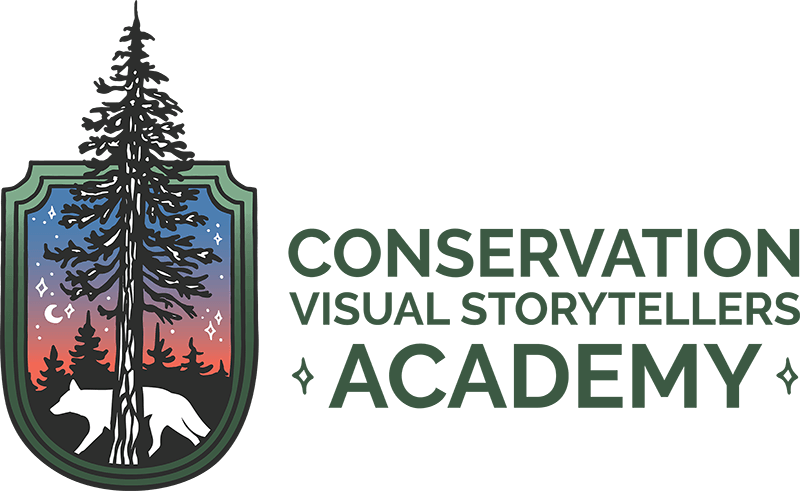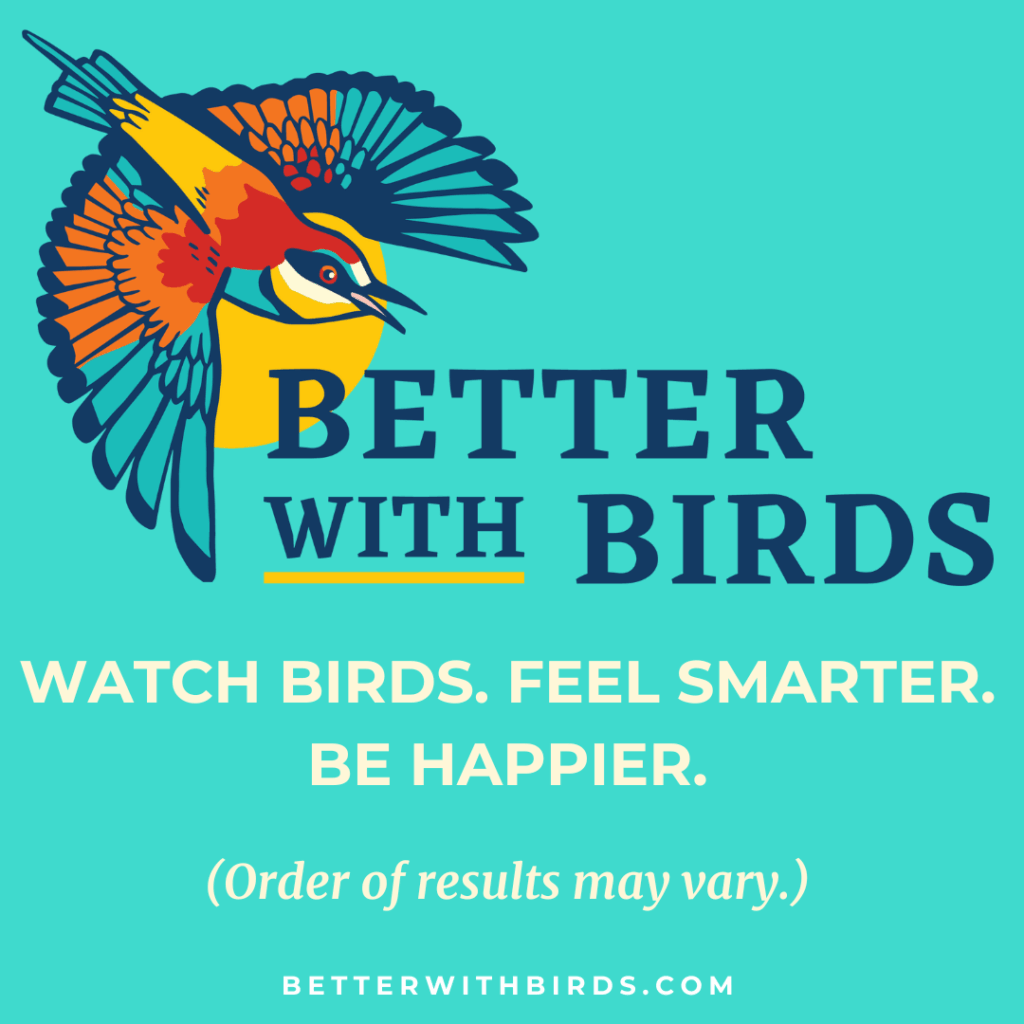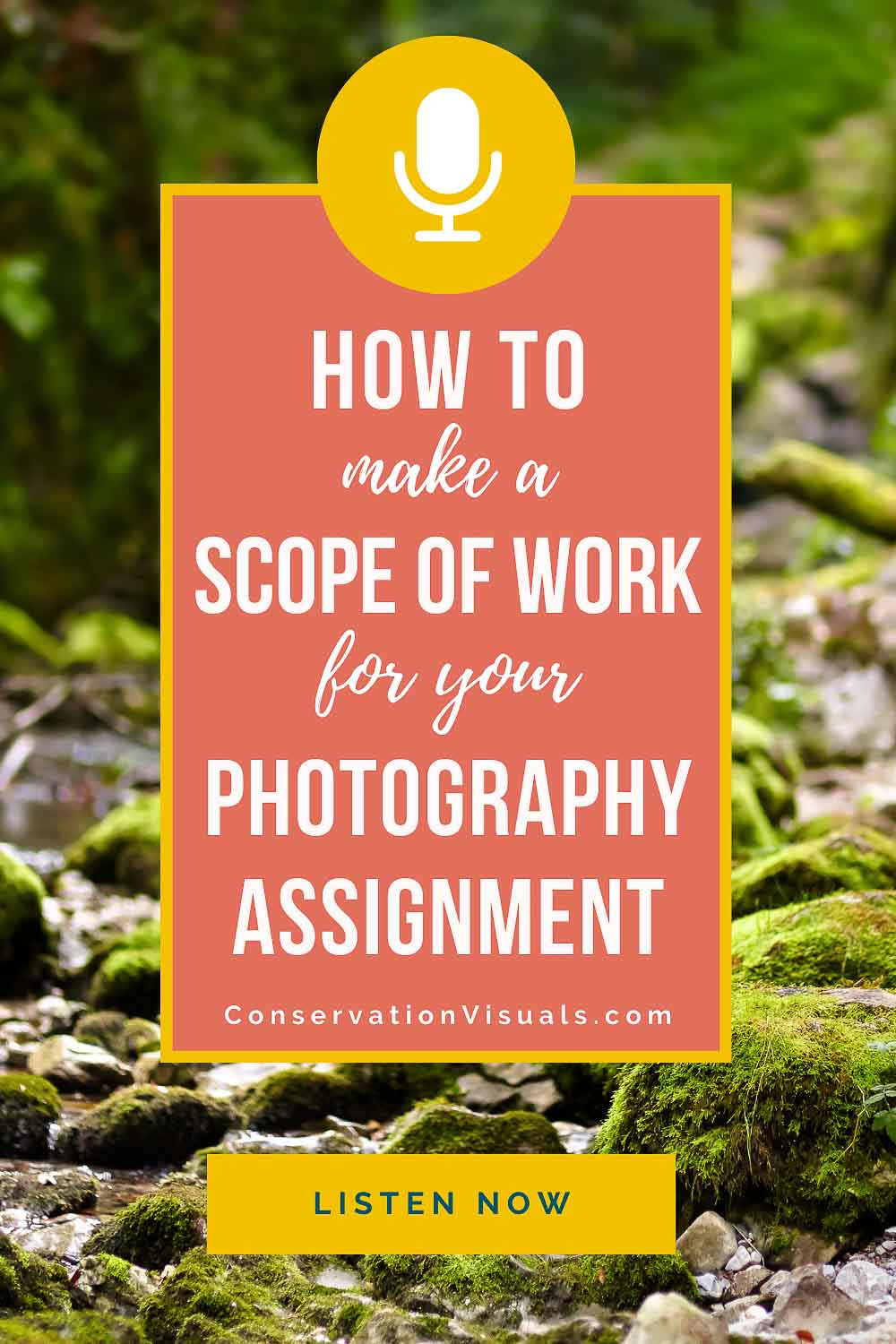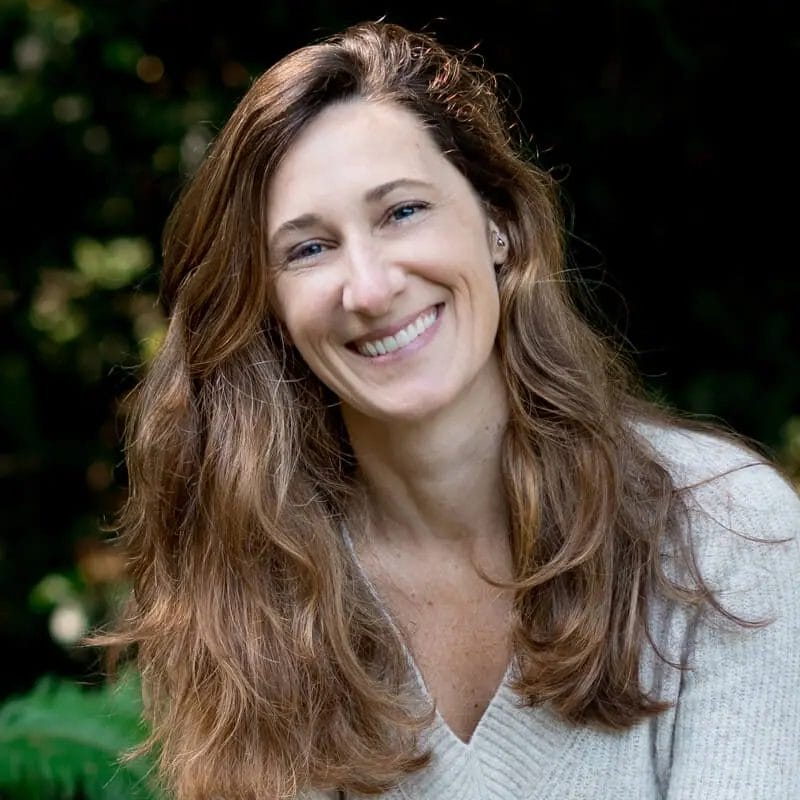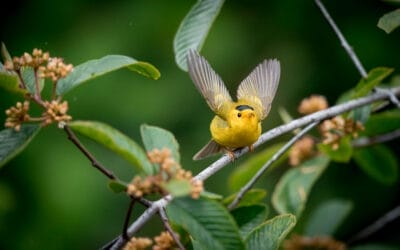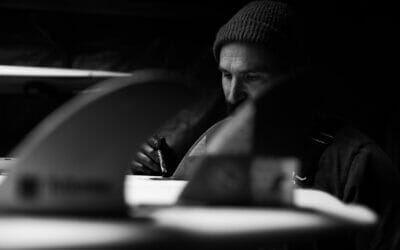Being organized is considered the boring part. But it is this critical component that actually frees us to be more creative in the long run.
Pausing at the beginning of a project in order to shape its purpose, its parameters, the direction, and the end goals always pays off big time in the end.
Raise your hand if you’ve ever felt overwhelmed by a photography project.
Or frazzled because you’re trying to juggle multiple projects or shoots at the same time.
Or stressed because you feel lost in the middle of a project and not sure how to move forward.
If you’re reading this article, I’m willing to bet your hand is in the air.
It’s an all-too common situation with creative minds. We get so excited by an idea, by the act of bringing a concept into reality, that the organizational steps it takes to do so effectively are ignored.
Being organized is considered the boring part. But, it is this critical component that actually frees us to be more creative in the long run.
By pausing at the beginning of a project in order to shape its purpose, parameters, direction and end goals, you have effectively paved a road.
Now you get to walk, skip, run, prancersize or traverse however you want down that road, knowing you won’t get lost and knowing when you’ll arrive at the destination.
There are two tools I use at the start of every project, large or small, whether I’m working on a single short photo assignment or a multi-year photography project.
As a freelancer with a dozen irons in the fire at any one time, I consider them absolutely vital for staying sane.
They are a scope of work (SOW), and a work breakdown.
Anyone with project management experience will recognize these two tools. However, I’ve adopted and adapted them for my own purposes as a freelance photographer. This article focuses on the what and why for creating a SOW.
Why start your conservation photography project with a scope of work?
A SOW is a document that outlines a project, including its goals, deliverables, and expectations of work.
While I almost never need to share a SOW with anyone else, I find it important to outline my project or assignment in this way so that I can see a full picture of what I’m about to work on.
It allows me to feel confident that I’ve thought out what I’m doing, what’s needed, and what I’ll have when I’m done so that I can let go of these worries and dive into the fun part of taking photos.
When you’re feeling really disorganized on a project, it can seem like tasks fly at you or a project can spiral out of control. You can end up feeling stuck, frustrated, incompetent, unproductive, questioning why you are trying to tackle this project that suddenly seems way bigger than anything you have the time or capability for.
You might get close to giving up.
The organizing aspect might not seem like much fun, but it’s far more fun than feeling like this during a project.
To enjoy a project, to truly get to the point of creative freedom and momentum, it is critical to know what exactly it is you’re working on, when you know you’re done with it, and what success looks like.
You can then stay energized about your ideas, you can build a sense of control over what you’re working on, and the practice fosters a sense of calm thanks to known boundaries.
You’ll no longer feel like you or your project is spiraling out of control.
A SOW is the first step toward this control and thus this creative freedom.
Once you create a SOW for a certain project, you can recycle it into similar projects, changing the specifics as needed.
It gets quicker and easier to do this process each project. So putting the effort into doing this the first time pays off in spades down the road.
The 6 Components of a Scope of Work for a Conservation Photography Project
1. Premise
The premise is the reason why your project exists at all. What is it that exists out there that you’re trying to capture in photos?
For example, say there’s a rancher who is using sustainable grazing practices and non-lethal predator control to promote biodiversity on her property. You want to document her ranching practices and its beneficial impact on the land. Your project exists because this rancher is out there doing something interesting. That’s your premise.
2. Goals
What do you plan to accomplish with your photography project?
Spend some time thinking about this. Why are you working on this project at all? What do you want to get out of it?
These are big questions and the more clear you can get on your goals, the easier the rest of this process will be.
For conservation photographers, the goal is usually to change minds or behaviors for the benefit of the environment.
In this example, you want to photograph how native plant and animal species are flourishing on this working ranch, and how that in turn benefits the domestic animals raised on the land.
You then want to use those visuals to connect with the surrounding community, and spark the interest in other local ranchers about sustainable ranching practices.
So your goal is to build and show a portfolio of images that powerfully illustrates the benefits of this rancher’s practices, which will then encourage sustainable grazing and non-lethal predator control among other ranchers.
After you know why your projects exists and what you want to accomplish by working on it, it’s time to set your deliverables.
3. Deliverables
Deliverables are the actual physical products that you create when you’re working on a photography project.
Carefully consider what your deliverables are going to be because these will drive the tasks you set later on.
Let’s say you want to submit this story to a magazine with national distribution so that you can reach a large audience. You also want a local gallery showing, since that is an opportunity to meet community members, connect with them, and take the first steps in changing minds.
Your deliverables, then, are a portfolio of 15 high quality images to hand to an editor, and a portfolio of 25 high quality images to print and hang in a local gallery.
Remember that your goals and your deliverables are two separate things.
Goals are what you want to accomplish in an idealistic (yet measurable and achievable) way, and deliverables are the physical, tangible things that you create.
The goal helps form the deliverables, and the deliverables help form the tasks (which we will get to in the next article on building a work breakdown).
4. Out Of Scope
This section is all about what you’re NOT doing in your photography project.
It sounds strange – wouldn’t you just say “everything not included is excluded”? Sort of, but not quite.
Creative people tend to have projects that grow like a sponge run under a faucet. The more thought and energy you pour into your project, the more excited you become about possibilities, and the bigger it gets.
Even if you manage to keep your project to some boundaries in your creative scope, it’s incredibly easy to become distracted by other things that collaborators, sponsors, or even your subjects ask for during the course of work.
Thus, a critical component of your SOW is writing down what you’re not going to include.
In our ranch example, you know what your goals and deliverables are, so your out of scope items might list documenting any ranch work unrelated to grazing or non-lethal predator control, documenting species not directly impacted by ranching practices, and documenting aspects of the rancher’s life not directly related to ranching tasks.
Your out of scope might also list deliverables you don’t want to be distracted by, or even photography techniques or strategies you don’t want to dedicate time to, such as camera traps.
When you define boundaries around your photography project, you can easily assess the new work and make informed and practical decisions about adjustments to them.
For example, you’re working on your ranching project and notice that a certain native species you’re documenting has this really cool behavior, or there’s a symbiotic relationship with another species, or there’s a niche habitat that suddenly you’re interested in.
Or say there’s a nearby nonprofit that is working on non-lethal predator control and they find out about your work. They then inquire if you’ll create a portfolio that they can use on their website or in marketing materials.
When these things pop up, you can say either, “That’s going to create additional work that doesn’t align with my scope, so I won’t work on it”…
Or maybe, “Well, that does fit into my goals, but can I accomplish producing these additional deliverables? Do I have to adjust what these new or existing deliverables look like?”
Thanks to having already set parameters around your project, you can confidently renegotiate your SOW as things pop up, or confidently pass on requests knowing what you can and can’t accomplish with the time and resources available for this project.
A third option is to place the new work that pops up in a “parking lot” for later.
5. Timeframe
When are you going to be working on this photography project?
You’ve got this great photography project outlined and now you need to figure out how much time you need (and have) to complete it.
Is it something that requires field work during a certain season?
Is it an assignment shoot and you only have a 3-week turnaround time?
Is it something that you know is going to take you a year of ongoing work?
The time frame is more than just figuring out calendar dates. It also is a reality-check for your overall project.
If you know the amount of time you have to work on your project, you can go back into your goals or deliverables – or even your premise – and question if you have the ability to accomplish what you want to accomplish in the timeframe you have.
Or, perhaps what you want to accomplish is so important to you that you need to change your timeframe.
Your time frame helps keep your entire project in balance, so that you can keep moving forward without hiccups or, worse of all, getting well into a project to find out you’re not going to be able to finish it.
6. Success
Last but certainly not least, create a picture of what success for your photography project looks like to you.
How will you know you’re happy or satisfied with your work when it’s completed?
Is success simply completing your deliverables? Or is it something more personal than that?
Perhaps success to you is getting 90 percent of the images on your shot list.
Or success is turning over your deliverables to an editor on time?
Maybe success is building a really great relationship with your subject so you can go back for future shoots.
Writing down what success looks like is a reminder to paying attention to these things as you’re working, so that when I’ve achieved your goals and completed your deliverables, you can go back and say, “Yes! That was a successful project” or just as important, you can look back and see where you didn’t quite feel successful and make adjustments in your next project.
Small steps to accomplish big ideas for your conservation photography work
A little structure at the start of a project goes a long way. The focus you put into shaping your project up front allows you the freedom to make informed decisions as the work progresses, so that you can stay immersed in the fun, engaging part of turning ideas into photographs! It transforms paralyzing chaos into fodder for the creative process!
Juggling multiple conservation photography projects
Most photographers are juggling a number of projects all at once.
You’re only one person and you want to be able to work on multiple things.
How do you accomplish that? How do you prioritize, juggle projects with due dates that fall on the same day, or set reasonable time frames for shoots?
If you’re going to be in the field working on one project, are you going to be able to set aside the other projects or are there certain things you need to be doing concurrently?
Creating a SOW for each project is Step One. The exercise not only helps you balance each project individually, but also allows you to clearly see how projects overlap, and how you need to prioritize things so you can work on multiple things at once without feeling overwhelmed.
The second step is creating a work breakdown. We tackle that in the next article.
